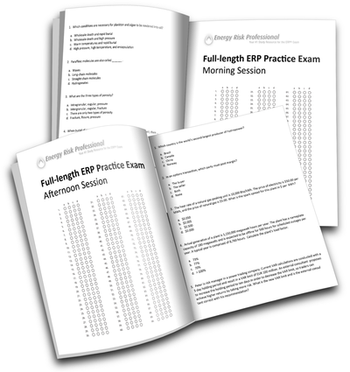
When I took the ERP exam, I was overwhelmed with the preparation like almost all candidates. The sheer amount of reading material (and the lack of preparation material) next to a demanding work schedule seemed almost too much at times, to the point where I was wondering whether enrolling for the ERP had really been such a brilliant idea.
I was lucky enough to pass the exam at the first try, but getting there was stressful, to say the least. In my preparation period, all of my free time was spent reading and learning, with little left for my family and friends. A few times I was tempted to postpone the exam to the next year, but I somehow managed to stay motivated and pushed through. I am very happy I did, but there are a few lessons from my experience that I learned during this time that could probably help future Energy Risk Professionals to design their exam preparation successfully. Even though I think I approached the ERP quite well, there are a few things that I would change to increase my learning effectiveness. Here they are:
- Start earlier. I reserved about six months practice time for the ERP. As it turned out this is really the minimum, and I should have allocated at least eight (or even ten) months, including solving practice questions. So if you decide to attempt the ERP, start immediately with your preparation, no matter how early that seems. You can do it in six months (perhaps even less if you have a lot of free time), but for working professionals, ten months would be somewhat comfortable.
- Read faster. When I started reading the GARP material, I took much too long to read the original material. In later levels I figured out speed reading and SQ3R, so this helped me tremendously to get through the reading material faster. While I read the ERP study material, I simultaneously took notes in question-answer format (which I turned into my ERP study notes), so this slowed down my process even more but was really a lifesaver in the review phase. Faster reading techniques will help you to have more time available for solving practice problems and to review the syllabus, so I think familiarizing yourself with cursory reading techniques can help you quite a bit in your ERP exam preparation, but also in all your other reading tasks.
- Solve as many questions and practice exams as possible. When I took the exam, there were only about 60 practice questions or so out there, which is really not enough to seriously practice for any exam. I also used my ViveraRISK study notes to review, but had I not had those, the exam would have been much more difficult. I know there is still a real scarcity of practice material for the ERP, but make sure you get at least all the available free practice exams from GARP. I also created a realistic ERP Practice Exam, which I think gives you a good impression of what to expect at the exam. Solving practice questions is excellent practice and repetition at the same time. It will also give you an honest assessment of your preparedness for the exam. Make use of all the resources you have to prepared in the best way possible!
These are the main lessons that I learned, and the things I would do differently if I took the ERP all over again. At the moment, I am studying for another finance designation, and I am using these techniques to speed up the process and learn faster. You can do the same to get through your ERP exam preparation faster and more effectively!













